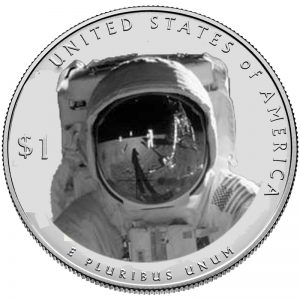Based on my posts from the last few weeks, I am sure you can tell I have a fascination with space. In fact, if there is such thing as reincarnation, I want to come back in the future to be able to travel around the universe in a manner similar to what we see in the movies. It is sad that there is no real enthusiasm for space exploration as there was when Apollo 11 landed on the moon!
In July 1969, my family lived in the Long Island suburbs of New York. The year before Apollo 11, my father bought a new, large RCA color television. Aside from learning that the beginning and end of Wizard of Oz was in black-and-white, I was able to watch the launches of the world’s largest Roman candle, the Saturn V rocket. Before Skylab and the Shuttle programs, it was a marvel of human achievement. I loved watching the liftoffs from Cape Kennedy and always wanted to go see one in person. I never did get to see a rocket launched, but I hope to some day.
This was a time when kids went outside to play, even in the summer evenings. We played a lot of baseball-related games including setting up a “field” in the street. Nobody was in the street. We were all home watching television and watching overhead shots of Mission Control in Houston. Even through the television, you could sense the tension until Neil Armstrong announced, “Houston, Tranquility Base here. TheEagle has landed.”
It wasn’t until years later when I learned more about the Cold War when I understood why it was more important for the United States to land and walk on the moon first. All I knew was it was very cool that an American was up there. It made Star Trek seem possible!
The moon walk was Monday night. Again, we were staring at the television watching the enactments as to what to expect. There were mockups of the Lunar Module and astronauts demonstrating what Armstrong was supposed to do. I remember the concentration on the “D-Ring,” the D-shaped handle that Armstrong had to pull on to open the door that had the camera. There was a question that the ring had to survive the landing and that the door could have jammed. We would have a historical moment without it being recorded on video!
“These are the first pictures ever broadcast from the moon,” was the words by whoever was on television. I remember the words but not who said them. Pulling on the D-ring worked and the world was watching. We watched as Neil Armstrong climbed down the ladder onto the surface of the moon. After a brief stop to remove the cover on the plaque that was attached to the ladder, Armstrong put both feet on the footpad of the lunar module. After a quick bounce step from the footpad to the surface of the moon, Armstrong gave his famous like, “That’s one small step for [a] man, one giant leap for mankind.”
There has been a “controversy” about whether Armstrong said “… one small step for man,” or “… one small step for a man.” Whatever is the correct version does not take away from the feat and the fact that Neil Armstrong was the first human being to set foot on Earth’s only natural satellite!
While NASA was the inspiration for many of the modern technologies we enjoy today, only Apollo 11 took it to the level of defining U.S. technology. While Skylab and the Shuttle programs were far more advanced, Apollo 11 stands as one of the 20th-century’s most amazing feats.
Needless to say, I am excited!
- Commemorative program issued in 2019
- Required design elements:
- Convex in shape “to more closely resemble the faceplate of the astronaut’s helmet of the time”
- “The Secretary shall hold a juried, compensated competition to determine the design of the common obverse of the coins minted under this Act, with such design being emblematic of the United States space program leading up to the first manned Moon landing.”
- Winning designer to receive no less than $5,000 for their design.
- Common reverse design “shall be a representation of a close-up of the famous ‘Buzz Aldrin on the Moon’ photograph taken July 20, 1969, showing just the visor and part of the helmet of astronaut Edwin ‘Buzz’ Aldrin, in which the visor reflects the image of the United States flag, astronaut Neil Armstrong, and the lunar lander.”
- Mintage Limit: 50,000 $5 gold; 400,000 silver dollars; 750,000 clad half-dollar; 100,000 five-ounce silver proof dollars
- Surcharges of $35 per $5 gold; $10 per silver dollar; $5 per half-dollar; and $50 per five-ounce bullion.
- Payouts: 50-percent to Smithsonian Institution’s National Air and Space Museum’s “Destination Moon” exhibit; 25-percent to the Astronauts Memorial Foundation; and 25-percent to the Astronaut Scholarship Foundation.


